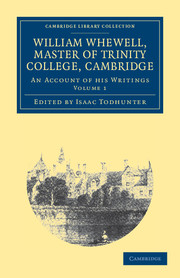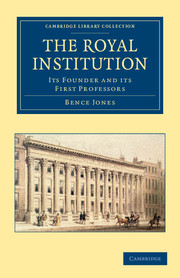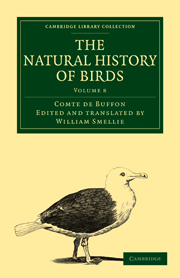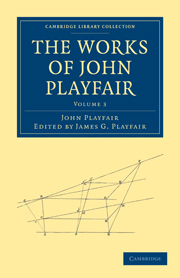Refine search
Actions for selected content:
10306 results in History of science: general interest
5 - The Pacific as seen from San Diego and Menard's changing views about the origin and evolution of the ocean floor
-
- Book:
- The Continental Drift Controversy
- Published online:
- 05 May 2012
- Print publication:
- 26 April 2012, pp 320-357
-
- Chapter
- Export citation
8 - Major reaction against the paleomagnetic case for mobilism and early work on the radiometric reversal timescale: 1958–1962
-
- Book:
- The Continental Drift Controversy
- Published online:
- 05 May 2012
- Print publication:
- 26 April 2012, pp 410-490
-
- Chapter
- Export citation
3 - Harry Hess develops seafloor spreading
-
- Book:
- The Continental Drift Controversy
- Published online:
- 05 May 2012
- Print publication:
- 26 April 2012, pp 198-279
-
- Chapter
- Export citation
4 - Runcorn shifts to mobilism: 1955–1956
-
- Book:
- The Continental Drift Controversy
- Published online:
- 05 May 2012
- Print publication:
- 26 April 2012, pp 154-196
-
- Chapter
- Export citation
Introduction
-
- Book:
- The Continental Drift Controversy
- Published online:
- 05 June 2012
- Print publication:
- 26 April 2012, pp xvii-xx
-
- Chapter
- Export citation
References
-
- Book:
- The Continental Drift Controversy
- Published online:
- 05 May 2012
- Print publication:
- 26 April 2012, pp 435-460
-
- Chapter
- Export citation
Copyright page
-
- Book:
- The Continental Drift Controversy
- Published online:
- 05 May 2012
- Print publication:
- 26 April 2012, pp iv-iv
-
- Chapter
- Export citation
Acknowledgments
-
- Book:
- The Continental Drift Controversy
- Published online:
- 05 May 2012
- Print publication:
- 26 April 2012, pp xii-xiii
-
- Chapter
- Export citation
The Continental Drift Controversy - Title page
-
-
- Book:
- The Continental Drift Controversy
- Published online:
- 05 May 2012
- Print publication:
- 26 April 2012, pp iii-iii
-
- Chapter
- Export citation

William Whewell, D.D., Master of Trinity College, Cambridge
- An Account of his Writings; with Selections from his Literary and Scientific Correspondence
-
- Published online:
- 05 April 2012
- Print publication:
- 08 November 2011
- First published in:
- 1876

The Royal Institution
- Its Founder and its First Professors
-
- Published online:
- 05 April 2012
- Print publication:
- 18 October 2011
- First published in:
- 1871

William Whewell, D.D., Master of Trinity College, Cambridge
- An Account of his Writings; with Selections from his Literary and Scientific Correspondence
-
- Published online:
- 05 April 2012
- Print publication:
- 08 November 2011
- First published in:
- 1876
Openness versus secrecy? Historical and historiographical remarks
-
- Journal:
- The British Journal for the History of Science / Volume 45 / Issue 2 / June 2012
- Published online by Cambridge University Press:
- 20 March 2012, pp. 165-188
- Print publication:
- June 2012
-
- Article
- Export citation
Selective flows of knowledge in technoscientific interaction: information control in genome research
-
- Journal:
- The British Journal for the History of Science / Volume 45 / Issue 2 / June 2012
- Published online by Cambridge University Press:
- 20 March 2012, pp. 267-280
- Print publication:
- June 2012
-
- Article
- Export citation
From ciphers to confidentiality: secrecy, openness and priority in science
-
- Journal:
- The British Journal for the History of Science / Volume 45 / Issue 2 / June 2012
- Published online by Cambridge University Press:
- 20 March 2012, pp. 213-233
- Print publication:
- June 2012
-
- Article
- Export citation
Mining Tacitus: secrets of empire, nature and art in the reason of state
-
- Journal:
- The British Journal for the History of Science / Volume 45 / Issue 2 / June 2012
- Published online by Cambridge University Press:
- 20 March 2012, pp. 189-212
- Print publication:
- June 2012
-
- Article
- Export citation
E.B. Tylor, religion and anthropology
-
- Journal:
- The British Journal for the History of Science / Volume 46 / Issue 3 / September 2013
- Published online by Cambridge University Press:
- 15 March 2012, pp. 467-485
- Print publication:
- September 2013
-
- Article
- Export citation
V.I. Vernadskii and the development of biogeochemical understandings of the biosphere, c.1880s–1968
-
- Journal:
- The British Journal for the History of Science / Volume 46 / Issue 2 / June 2013
- Published online by Cambridge University Press:
- 15 March 2012, pp. 287-310
- Print publication:
- June 2013
-
- Article
- Export citation

The Natural History of Birds
- From the French of the Count de Buffon; Illustrated with Engravings, and a Preface, Notes, and Additions, by the Translator
-
- Published online:
- 05 March 2012
- Print publication:
- 25 November 2010
- First published in:
- 1793

The Works of John Playfair
-
- Published online:
- 05 March 2012
- Print publication:
- 30 June 2011
- First published in:
- 1822
